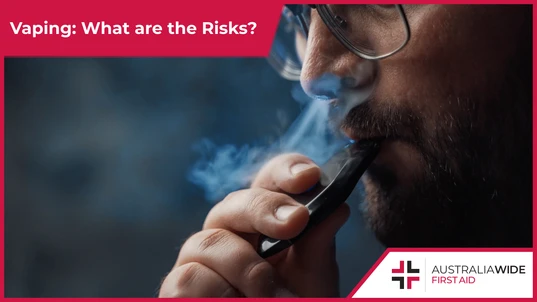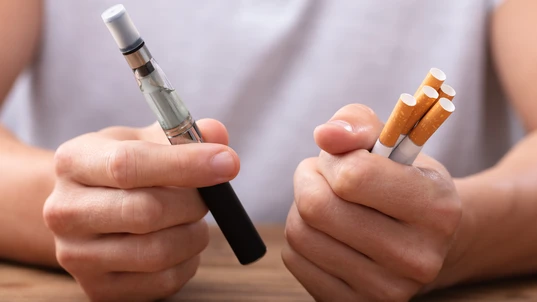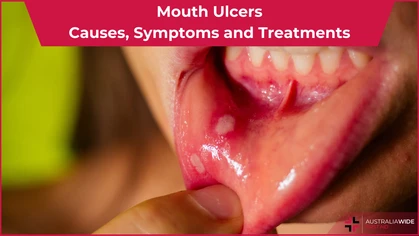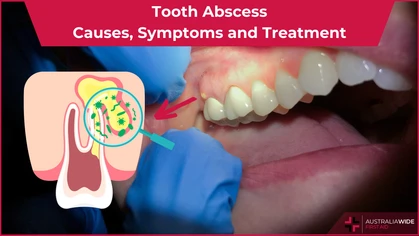Vaping and Young People: What are the Risks?

General Health-Related

Vaping or electronic cigarettes contain many harmful chemicals that may increase your risk of various diseases.
Vaping, or electronic cigarettes (e-cigarettes), have come to be a safer alternative to the smoking of tobacco products. However, growing research on vaping has shown concerning health impacts due to the many chemicals that go into each cartridge.Vaping Health Risks
Vaping or the usage of e-cigarettes have become popular among young adults in recent years. According to the Australian Bureau of Statistics, almost one in ten people (9.3%) aged 18-years and over had used a vaping device at least once, with 2.2% reported currently using a device. With young adults aged 18 – 24, this number jumps up to 4.8%. In adolescents aged 12- 17, the number jumps up to 32% having used a vaping device in the past month – according to the Alcohol and Drug Foundation. Introduced as a safer and healthier option as opposed to smoking tobacco and help quit smoking, vaping allows its users to receive a nicotine kick through ingesting smokeless vapor instead of smoking or chewing tobacco. However, there are ongoing debates between both critics and supporters that revolve around the health benefits and issues that are associated with this new trend. Let’s explore what exactly is vaping and what may be the health risks associated with it.
Research has shown that vaping is far less harmful that smoking, however, that does not mean they are risk-free.
What is Vaping?
A ‘vape’, or e-cigarette, is a device that heats up liquid to create vapor for its user to inhale. These come in electronic cigarettes that consist of an atomizer, a battery, and a small cartridge where vaping liquid is stored. While regulations have tightened with the sale of e-cigarettes containing nicotine being illegal in most states, many can purchase vaping devices through online stores to bypass this. Sharing of devices and giving someone money to purchase them is also a common practice, especially among young people and adolescents. Devices produce an aerosol by-product by heating up a liquid that often consists of flavorings, ultrafine particles, volatile organic compounds, and heavy metals such as nickel and lead. While many vaping liquids can be purchased without nicotine, most options on the market contain this addictive chemical. This liquid is then delivered to the user via a mouthpiece that is inhaled into the lungs and then expelled via the mouth or nose. Vaping devices are often small and can be mistaken for a flash drive. It is charged through a USB port that can be plugged into a laptop. Some vaping devices can also be disguised as asthma puffers, pens, and even smart watches. As this trend continues to rise among adolescents, there have been reports of students sneaking vaping devices into school because of how easy it is to conceal them. While the vaping industry is fairly new, the research on its long-term health effects is still in its infant stages. However, based on existing research, vaping should be done with caution due to the following risks involved.Increased Risk of Heart and Lung Disease
Research has shown that vaping can increase one’s risk to both heart and lung disease due to various factors. However, nicotine is the main culprit when it comes to increasing the risk to these diseases. Nicotine has been shown to increase one’s risk in high blood pressure, adrenaline spikes, and increase in heart rate. Coupled with evidence that vaping has been shown to immediately stiffen and tighten blood vessels, this greatly increases one’s risk to heart attacks and coronary heart diseases. Emerging data suggests links to chronic lung diseases and asthma due to the overexposure to harsh chemicals such as diacetyl, formaldehyde, and acrolein that coats the lungs. By inhaling the various chemicals found in vaping liquids, it may lead to permanent scarring. This can cause an inflammatory response in the lungs and lead to other deadly conditions and diseases such as bronchiolitis obliterans, vaping-related lipoid pneumonia, and a collapsed lung.Increased Risk of Cancer
As vaping is a relatively recent trend, there are no documented cancer diagnoses directly linked to vaping or e-cigarette usage. As most people who use vaping devices are below the age of 35, it can take decades before long-term affects to appear. However, despite the low number of empirical evidence showcasing the link between vaping and an increased risk of cancer, there are other issues that can be linked from what we know now. A study in 2018 suggested that despite vaping posing fewer health risks compared to tobacco smoking, vaping isn’t risk free. As vaping is less stigmatized and has generally more accepted compared to smoking, the likelihood of a person picking up the habit of vaping increases greatly. This in turn increases the overall cancer risk due to the heavy compounds and chemicals in vaping liquids. However, more research is needed to understand the potential implications of long-term vaping.
According to the Truth Initiative, adolescents are 16 times more likely to vape than 25 – 34 year olds.
Increased Risk of Addiction
According to Lung Foundation Australia, 21% of vaping devices contained nicotine. As nicotine is very addictive, this can cause our brain and body to be dependent on the chemical. The more someone vapes, the more their brain and body gets used to having nicotine in the bloodstream. When someone stops vaping, this can cause the nicotine level in the bloodstream to drop drastically – causing withdrawal symptoms such as:- Feeling irritable,
- Having headaches,
- Increased sweating,
- Feeling tired, groggy, or listless,
- Having trouble sleeping, and
- Having unpleasant feelings such as being sad, down, or anxious.
Protect Your Lungs
With a new generation of young adults and adolescents taking up the habit of vaping, it is crucial for parents and public health officials to help curb this habit before it worsens. Some strategies and campaigns aimed at young people have worked – such as utilizing constant reinforcement from parents to deter striking up the dangerous habit. Starting the conversation early is important to ensure that from a young age, the effects and dangers of vaping are clearly communicated. This conversation should continue as the child gets older to reinforce the importance of protecting one’s health. If your child has an existing habit of vaping, it is important to learn why. There can be numerous reasons a child can take up vaping such as peer pressure from friends or being stressed from school. Instead of punishment that may push them to vape more, offer understanding and help to steer them away from the dangerous of vaping, nicotine, and tobacco in the future.Conclusion
Despite vaping being viewed as a safer and healthier alternative to smoking tobacco, there are strong links between vaping and life-threatening diseases from heart attacks to a collapsed lung. It’s important to avoid the lure of nicotine addiction and flavorings that can mask the danger in each cartridge. Check out our First Aid Course to help manage the potential side effects of vaping and learn more about its dangers.
Originally published at
https://www.australiawidefirstaid.com.au/resources/vaping-risks-young-people
as part of the Australia Wide First Aid Articles Library









